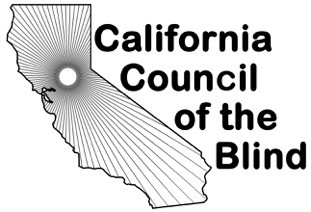by Susan Glass
I am happiest when spending time outdoors, especially in wild places where birds abound. On Friday, January 19, I had the outdoor experience of a lifetime. My friend LeeAnn Nakagawa and I spent a day at West Coast Falconry, one of 3 facilities in the United States where laypersons can, under the supervision of master falconers, interact with and fly falcons and hawks. West Coast Falconry is located on Spring Valley Road in Marysville, California, on 110 acres of rolling grasslands and oak groves. The hawks, owls and falcons that live there are kept by day in what is called a weathering yard, which consists of spacious enclosures for each bird, with plenty of perches, foliage, water, and food. At night the birds are housed in an indoor shelter called a mew, to protect them from predators.
Falconry is one of the most ancient hunting partnerships that exists between people and animals; it predates the use of firearms. Both men and women hunted with falcons. The birds would fetch the prey, and their human handlers would divide it fairly so that both bird and handler got enough to eat. We are talking about substantially large prey animals here: rabbits, pheasants, and ducks. The sport of falconry still exists today, but many of its practitioners are also active conservationists who educate the public, and fight to protect the species. Indeed, master falconers were responsible for saving Peregrine Falcons from extinction when the widespread use of DDT reduced their numbers to just 20 birds. Thanks to diligent falconers, Peregrines are no longer endangered.
The outing in which LeeAnn and I participated was not a hunt; we merely exercised the birds. Our instructors, Jana and Kate, were happy and comfortable working with a blind person. They were great sighted guides and hands-on teachers. It was thrilling to walk through the meadows carrying a Harris Hawk named Mariposa on my left wrist. Hawks have sharp talons that will lacerate your naked skin, so you carry them on a thick, leather glove, holding their restraining leash tightly in your fist. You hold your arm level as though balancing a cup of coffee. The hawk wears a cloth hood as you carry it, which keeps it calm. When you are ready to fly it, you remove its hood, unfasten its leash, stretch your arm horizontally in the air at about shoulder level, and open your fist. The hawk often remains perched on your arm for a few seconds or even a few moments, but when it's ready to fly, it rouses (straightens and shakes all of its feathers) and then takes off. We took turns flying Mariposa, calling her to our gloves by holding out pieces of raw quail meat. We also flew two falcons: one named Cubby and another named Benny. Our morning brimmed with amazing sounds: the tinkling bells worn by the falcons, the beeping and static of the radio transmitters that they also wear, the whistle calls that Jana and Kate used to summon the birds, the whizzing of falcon wings heading toward us at 100 miles per hour. (Their maximum speed is 240 MPH, which is faster than a running cheetah).
I learned much that day about the differences between hawks, falcons, owls, and vultures. Falcons are long-winged birds capable of high, swift flights and speedy descents. Our teacher Jana calls them heat seeking missiles. In contrast, hawks are short-winged raptors that execute sharp turns and shot gun flights close to the ground. It's dangerous to fly more than one falcon at a time since they attack one another. So, when we brought Cubby and Benny into the meadow to fly them, we placed one in a hooded box to rest while we flew the other. Harris hawks on the other hand, are content to hunt together. They are affectionately referred to as the Labrador retrievers of the raptor world. Jana told us about a wild male Harris hawk who had an injury that kept him from hunting. So, he stayed home and babysat juveniles while their mothers brought food to he and the babies.
Master falconers Jana and Kate are women of conscience. They refrain from hunting with their hawks and falcons in mid spring when prey animals such as quail and rabbits are birthing and raising their young. This practice insures that prey populations remain stable. Nor will they fly their birds in extremely hot weather. If you visit West Coast Falconry in summer, you'll probably spend time with the birds on shaded lawns near their aviaries.
It's difficult to become a falconer. You must find a master teacher who will sponsor you, and you must study hard to learn animal husbandry practices, and also log several hours working alongside a master falconer. You are first an apprentice, then a mid level practitioner, and finally a master. There are exams to pass and licenses to obtain. To be a falconer is to advocate reverence for, and protection of wildness. It involves knowing in and with your own body, that a predatory bird is not vicious. It is intelligent and powerful, and it earns a dignified living. It is also beautiful, and its voicings, though rarely melodious, are varied and rich. I have several recordings of raptors: Red shouldered Hawks, Red Tailed Hawks, Harris Hawks, Sparrow Hawks, and Prairie Falcons. You can find such recordings on YouTube, but the best are found on the Cornell Lab of Ornithology website under the Macullay Library Recordings link. You might also visit the West Coast Falconry website where you can read about all who teach there, as well as about the birds, and the kinds of tours and hands on experiences that are available. If anyone is interested, I am compiling a list of books, articles and recordings about falconry, and I'm including as many materials as possible from Bard and Book Share. Please contact me if you'd like this bibliography.


